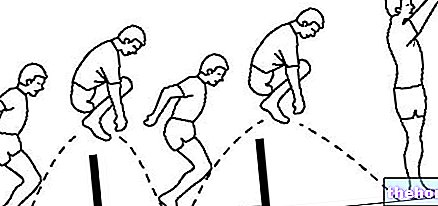Edited by Dr. Angelo Cirillo
Introduction
The main problem that needs to be solved when trying to plan and schedule a training plan,

Knowing how physical abilities and physiological qualities qualitatively and quantitatively influence physical performance in its competitive manifestation is not very easy, indeed it can be said that it is extremely difficult.
The individualization of a performance model is the first step that a professional must take in view of a training aimed at improving the physical conditions of an athlete practicing any sport.
Physical skills involved in the game of basketball
Performance in basketball is determined by the technical, tactical, physiological and psychological / social characteristics of the players. During the game, players perform different types of activities ranging from standing still to sprinting and the intensity can vary at any time. As a result, the physiological demands of basketball are more complex than those of many individual sports.
In optimal conditions these requests are strictly related to the player's physical capacity, which can be divided into the following components:
- The ability to perform prolonged and intermittent physical exercise.
- The ability to perform high intensity phases with reduced recovery periods between them (RSA).
- The ability to sprint and decelerate in tight spaces.
- The ability to develop a high level of power.
These characteristics are largely determined by genetic factors, but they can also be developed through training.
Assessment of the physical abilities involved in the game of basketball
Once the specific characteristics required of a basketball player have been identified, it is possible to move on to the specific evaluation of these skills.
The morphofunctional evaluation, therefore, consists in verifying the abilities of an athlete in relation to his sport and his specific performance, with the aim of setting up, controlling, reshaping training programs. It is one of the moments in which collaboration and comparison between the various components of the technical staff (coach, athletic trainer, doctor, physiotherapist, osteopath, etc.) is most important.
We therefore define functional evaluation as a form of control of the training process, consisting of tests, measurements and tests that can provide the coach with reliable and useful information on the conditions of the individual athlete and of the team in the various phases of the competitive season. simple control of the state of health or general physical efficiency of the athletes, but an evaluation as precise and specific as possible of the athlete's abilities in relation to the sport practiced.
From a physiological point of view, basketball is considered a sport with alternating aerobic-anaerobic commitment, i.e. where aerobic energy mechanisms are used alternately (medium-low intensity commitment for a duration of the effort quite long such as 40 minutes of actual play) and anaerobic (high to maximal intensity commitment for a very short duration: sprints, jumps, sprints, changes of direction, etc.). The scientific literature suggests that a good level basketball player should have good endurance qualities (which are certainly trainable and improvable), but above all excellent alactacid anaerobic abilities, all those that involve very short but very intense efforts, which are probably the busiest in the game and often make a difference. Furthermore, the qualities of muscle strength, especially of the lower limbs, joint flexibility and coordination must be taken into account: for all this it is necessary to establish a battery of tests that allows to measure the qualities in question in a reliable, objective, valid and repeatable, defining the starting values in the first instance at the beginning of the season and verifying any changes during the championship.
The tests must be performed under standard conditions that can be repeated over time, with the help of specific equipment for evaluation in the laboratory or in the field (in the gym) - such as heart rate monitors, dynamometric platforms, photoelectric cells, lactometers - and must reproduce in a way precise the technical gesture to be broken down and evaluated (jumps with a platform, sprints with timed routes, targeted effort tests, etc.). The effort of scientific research in recent times has been aimed at identifying tests that are easy and economical to perform, even if preserving the essential characteristics of validity and reliability. The preparation of the test battery should be customized on the group of players in question, differentiating the tests according to role, age and technical level, in order to have reliable and comparable data even between players from different clubs. A periodic and standardized use of these tests would also be desirable, also to develop, in agreement with the coach and athletic trainer, a monitoring of the progress of the training program during the season, carrying out the tests coinciding with the start of the various macrocycles. . Furthermore, these assessments are of "decisive importance in the course of the functional re-education of an athlete after an injury, to verify his condition in the recovery phase up to the re-achievement of the pre-injury levels. It is therefore evident that each staff can develop a its program of tests and evaluations based on your needs, your means, the equipment and the subjects available.
In basketball we can, therefore, define a battery of tests useful for the evaluation of the player:
- Anthropometric evaluation (weight, height, percentage of body fat)
As part of a clinical-functional evaluation of the athlete, the anthropometric parameters represent an important starting point. In addition to the simpler and more used measurements (height and weight), there are a series of values that need to be investigated. for a more precise evaluation of the athlete's state of efficiency; these include the percentage of body fat. The results obtained in some studies indicate that there are variations in the body composition of the players depending on the period of the competitive season (the measurements were made at the beginning, in the middle and at the end of the season) and that there is a certain correlation between his performance and performance of the athlete. Furthermore, it is clear from the data collected that there is a significant difference in the parameter investigated between the different roles. The validity of a complete anthropometric assessment, including the determination of body composition, for practicing athletes is therefore highlighted. basketball. - Specific effort test, with measurement of the anaerobic threshold with bloodless method (monitoring of heart rate by means of heart rate monitors read directly on a watch connected to electrodes placed on a band applied to the subject's chest) or bloody (determination of lactacidemia with blood sampling from the earlobe or fingertip, in order to detect the accumulation of lactic acid in the blood). These tests can take place in various ways, which generally tend to simulate the specific effort of the game, or aimed at identifying the so-called anaerobic threshold.
- Measurement of jumping skills using a dynamometric platform (Ergojump or Bosco's platform): it consists of a platform connected to a computer which, by measuring the flight time, provides information on the muscular and metabolic characteristics of the subject. The most used tests in basketball are the squat-jump, the countermovementjump, the drop jump, the 15 and 30 second test: through these specific tests, the explosive-dynamic strength capabilities of the lower limbs and the elastic component of it are evaluated. , the anaerobic power of the subject and consequently the muscular characteristics of the same.
- Shuttle test, with detection of running speed with and without the ball, on field courses that reproduce competition situations, and eventual measurement of lactacidemia.
- Muscle and joint evaluation by isokinetic test of the various joints (in particular that of the knee) with maximal flexion-extension tests at constant execution speed. With this equipment it is possible to measure a series of parameters of strength, power, work, resistance in all degrees of joint excursion, comparing the results of the two limbs moment by moment.
Obviously there must be a temporal strategy of placing the tests during the season:
- Season start (pre-season period)
- End of pre-season tournaments - Beginning of the championship
- Winter break (National, All Star Game)
- End of first round
- End of regular season - Playoff or playout start
Therefore, there is a need for sporting emancipation, which envisages the use and implementation of all these evaluation methods discussed so far.
In this field, the figure of the graduate in Motor Sciences, even better if with a continuation of specialization, can fully find his place by becoming the expert not only of training methodologies but also of evaluation, thus providing all "€ ™ athlete a 360" ° service, who follows him throughout the season and is able to effectively evaluate the changes produced by a training path.
With these assumptions, we will arrive at a sporting culture capable of bringing significant benefits to the sporting movement in general, and therefore have strongly positive implications in this area.
It is therefore imperative to underline how important and of central relevance the Motor Science expert is, who - thanks to his physiological, anatomical, sporting, methodological, didactic skills - can undoubtedly bring great benefit in any sporting field, from professional to amateur to amateur. Only in this way and with this perspective can sport be considered in all senses positive and emancipatory for anyone who benefits from it.




























